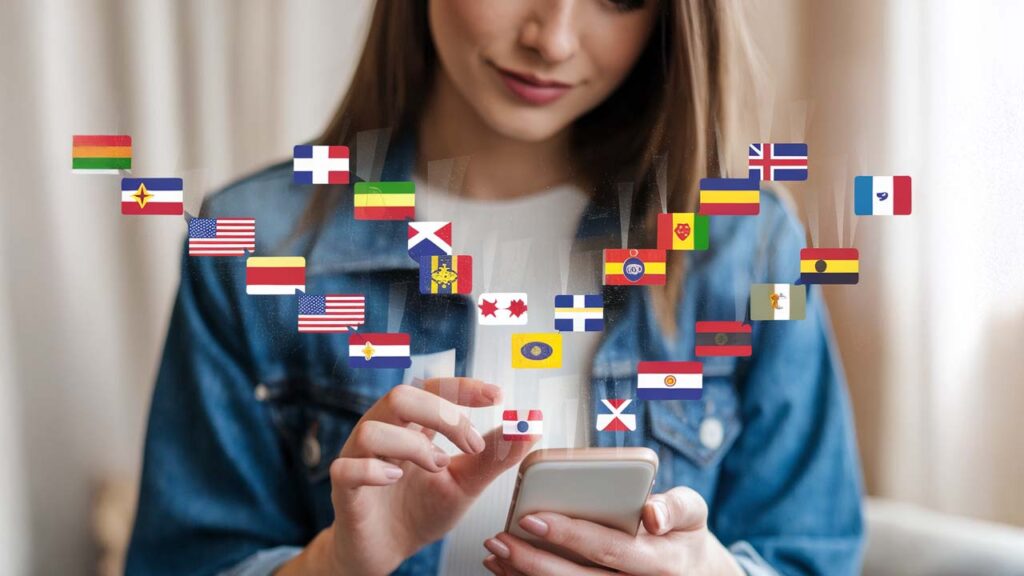More Than Postcards: What’s Driving the Global Dating Scene?
Online matchmaking has turned into a massive global marketplace, with 441 million active users projected by the end of 2023 and annual revenue hitting $8.7 billion worldwide. The United States takes the lead with 21.9% of its population swiping and scrolling, contributing $2.5 billion to the industry. Meanwhile, Europe holds its own—19.1% of the population in the UK and 12.7% in France are active on such platforms.
In countries with massive populations like India and China, penetration rates stand at 9.1% and 5.8% respectively. But even those smaller percentages translate into serious money. A huge user base—even if thinly spread—means unmatched potential for dating services to rake in revenue. In Europe, apps show varying regional interest: Badoo leads in Spain, France, and Italy, while Lovoo finds a niche in Germany and Italy with its location-based matching.
Playing the Long Game or Passing Through?
Dating apps abroad attract all types—some people swipe for a fresh start in love, others are more about short-term thrills. Travelers might use apps to connect with locals for cultural immersion or companionship, while expats seek deeper partnerships to hold onto a sense of belonging. Then, there are those exploring non-traditional setups, like long distance Sugar Dating, where people prioritize stability and shared priorities over conventional dating molds.
Whether someone’s testing their compatibility over memes or crossing continents for romance, the ultimate appeal lies in users choosing relationships that suit their goals—be they fleeting, meaningful, or forward-thinking. With an increasing number of people traveling for work, studies, or leisure, online dating is evolving into a tool that bridges geographical barriers, creating romantic possibilities that never existed before.
However, for some, dating apps abroad remain nothing more than a playground—an opportunity to indulge in exotic flings with no long-term expectations. Many users admit to using dating apps primarily for casual encounters while traveling, enjoying the novelty of meeting people from different cultures without the pressure of commitment. Additionally, certain destinations have become known as hotspots for dating tourism, where travelers seek local companionship as part of their overall travel experience.
Tinder, Bumble, and the Big Boys: Who’s Really Running the Show?
Tinder sits at the top of the dating food chain in the United States and much of Europe, clocking in with 66,000 daily downloads spanning these regions in early February 2022. Badoo takes the crown in parts of Europe, overshadowing apps like Bumble in France, Spain, and Italy. Hinge, however, scores points in the UK for catering to people looking past casual hook-ups.
Match Group dominates this crowded space, claiming over 56% of total downloads across the globe. With Tinder, Hinge, OK Cupid, Plenty of Fish, and Meetic under its belt, this company has its foot on your shot at romance. Magic Labs, running apps like Bumble and Badoo, holds a slightly smaller—but still formidable—33% share of the market.
Despite their popularity, some smaller, niche platforms are growing in influence. Apps like The League cater to high-achieving professionals, while apps like Feeld and Lex focus on alternative relationship structures. As the demand for more customized dating experiences grows, these niche apps are likely to carve out a more significant space in the global dating market. Meanwhile, location-based and culture-specific apps are also on the rise, catering to users who want to date within particular cultural or linguistic communities.
For Love, Memes, or a Backup Plan?
People aren’t limiting themselves to one predictable playbook on these platforms. Singles today might be sending memes or curating playlists as love letters, but their intentions vary. Some seek serious relationships founded on communication and shared values. There’s a growing focus on connections that prioritize emotional availability and compatibility over superficial preferences. From interest-based dating in niche communities to “micro-mance” (dating for deeper compatibility), apps are fostering more focus on what clicks emotionally than what photographs well.
The market trends prove it: about 50% of women in the United States say they value more authentic dating that reflects both the highs and lows. Meanwhile, close to 70% of singles embracing serious relationships are looking to upfront transparency about values and goals. Matching over fleeting one-liners is turning into something more intentional for many, whether abroad or at home.
Additionally, the rise of video dating features has helped improve the authenticity of online dating. Apps are incorporating AI-driven compatibility assessments and background verification measures to enhance trust between users. These features are particularly important in international dating scenarios, where cultural and linguistic differences can add layers of complexity to interactions.
The Future of Dating Apps Abroad
As online dating expands beyond borders, it’s reshaping how relationships are formed. While some people view international dating apps as a playground for temporary flings, others are using them as a genuine tool to find long-term partners. With continuous advancements in AI matchmaking, identity verification, and cross-cultural engagement, these platforms will likely continue evolving to better serve the diverse needs of users worldwide. Whether it’s a fleeting romance in Paris or a life-changing connection in Tokyo, dating apps have transformed the way people experience love across the globe. As technology improves and user preferences shift towards meaningful connections, the future of online dating abroad may become more intentional, paving the way for relationships that transcend physical borders and cultural barriers.
